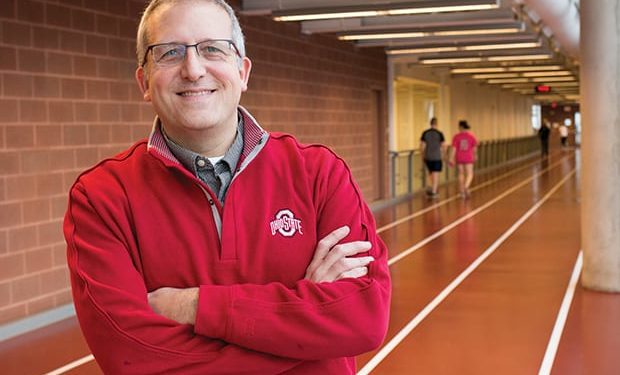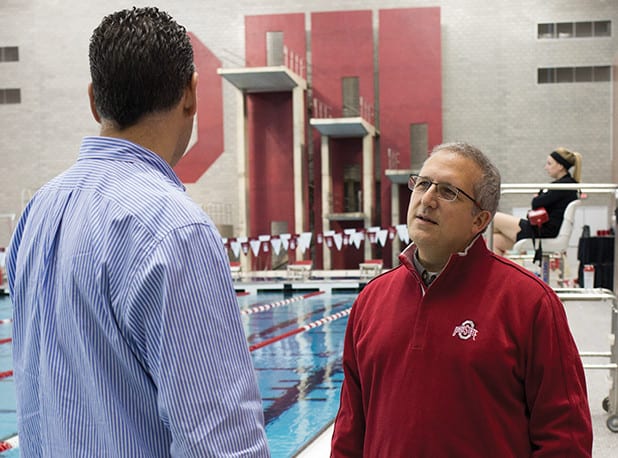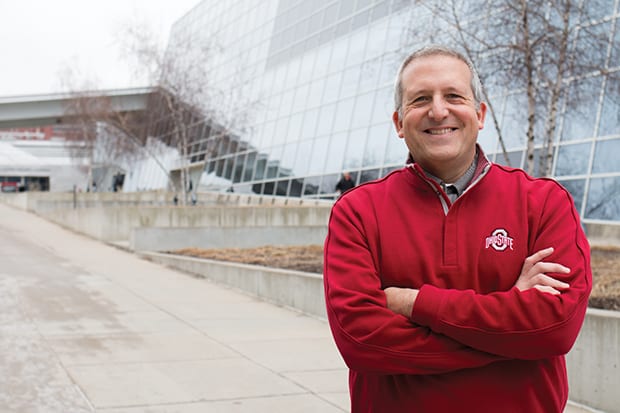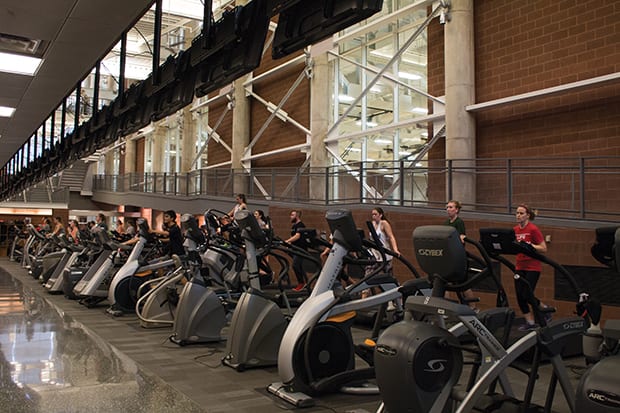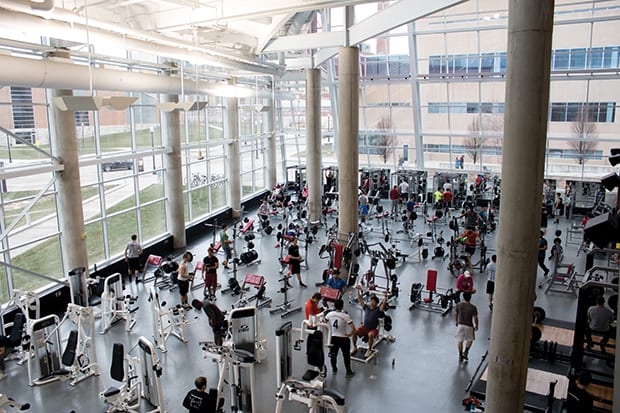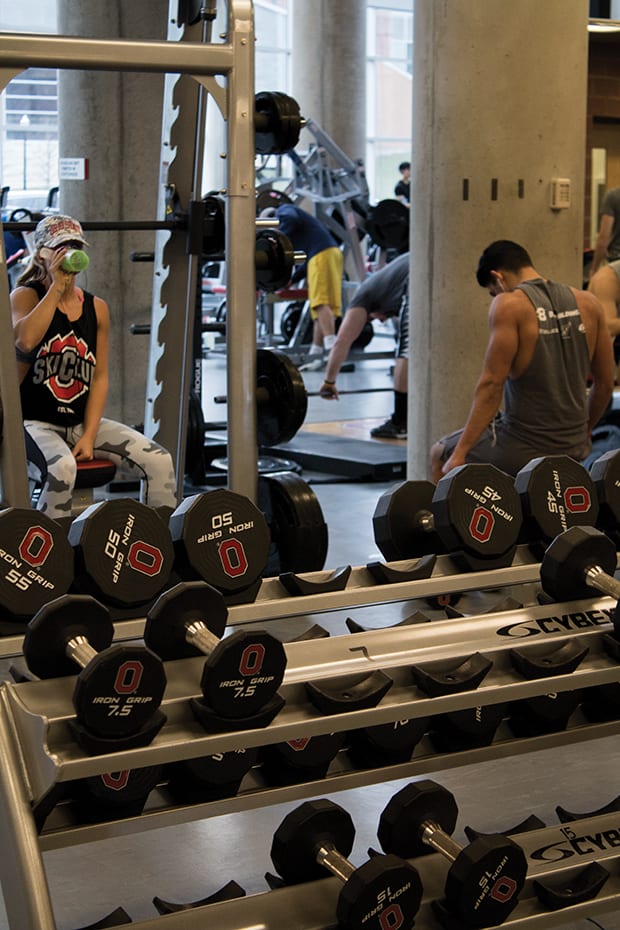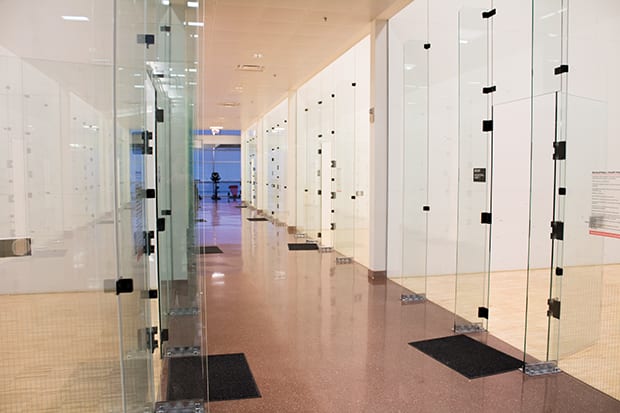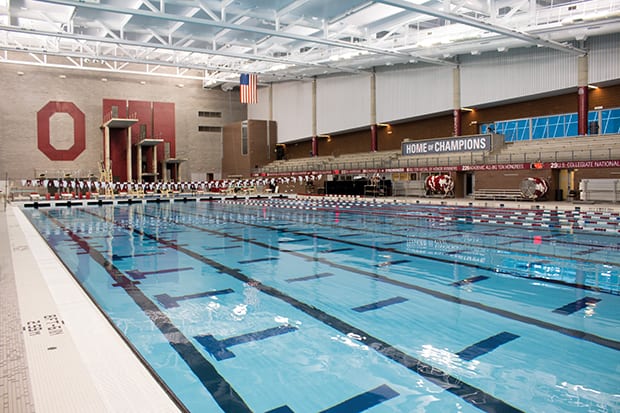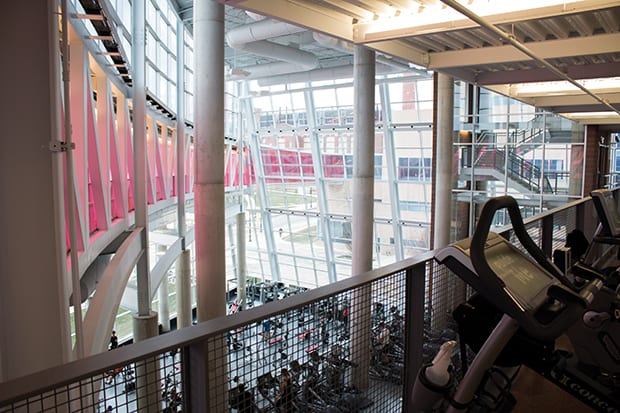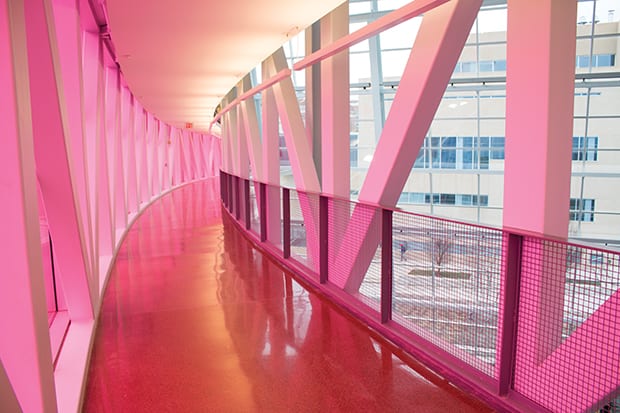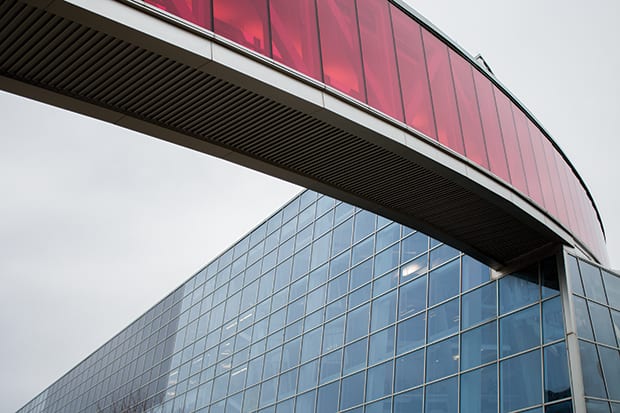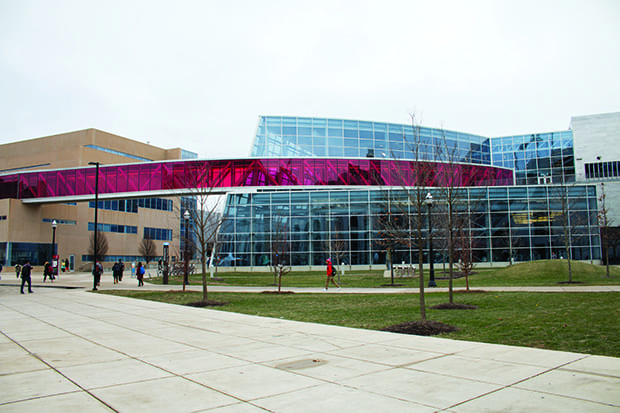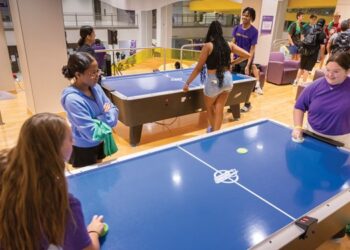Expansive, populous and palatial. These are all words that could be synonymous with The Ohio State University. With enrollment hovering around 60,000, the university is one of the largest in the U.S. Therefore, the facilities on campus must be able to accommodate such a large student body.
With five indoor locations and more than 90 acres of outdoor space, Student Life Recreational Sports at OSU strives to fulfill its mission to engage the university community in physical wellness activities by offering the finest collegiate recreation programs, services, staff and facilities.
The Recreation and Physical Activity Center (RPAC) is the largest recreation facility on campus, spanning almost 300,000 square feet. Since opening in 2005, the RPAC has swiped in 13.5 million users. And while its size is truly remarkable, according to Marci Shumaker, the senior associate director for programs and administration, that is not the most notable feature of the RPAC.
“I think people naturally say it is our size that makes us unique, but I would say it is more about the wide variety of things we are able to do here,” said Shumaker. “We have such a diverse population of students, so we try to create programs that engage them in all different ways.”
Programs range from over 100 group fitness classes a week, aquatic programing, adventure trips, climbing, intramural sports, over 50 sports clubs, personal training and much more. The RPAC truly embodies the motto of the department, Life In Motion. Around every corner, down every hallway and inside every group fitness studio, students are developing balanced, active lives.
“The building is really a community center in addition to being a recreation center,” said Dr. Donald A. Stenta, the recreational sports director. “We have different types of environments within the facility, so we can support as many people as possible in the way they like to workout. The groupings of equipment and how the various spaces are laid out really honors the different ways people like to participate in physical activity.”
Just as they have been intentional about the design and layout of the building, the department is also extremely calculated when launching new programing. “We think creatively about how we implement new programs to accommodate student activity and movement,” added Stenta. “We spend a lot of time analyzing data and thinking about how to make improvements. It is not on a whim, but we are very strategic about rolling out new initiatives.”
The RPAC runs like a well-oiled machine: Equipment is replaced on a regular schedule, students swipe into every group exercise class to track data, staff conduct head counts throughout the facility every hour. According to Dave DeAngelo, the senior associate director for facilities, ensuring everything in the RPAC runs smoothly is no easy task.
“There are some tough things we have to deal with, but those challenges aren’t unique to me,” said DeAngelo. “Everyone has them, but we might have them on a bigger scale. The No. 1 thing I try to do is get everyone on the same page, from our students all the way up to those in administrative roles. If there is a piece of paper on the ground, it is everyone’s job to pick it up, not just the housekeeper. To me that has been a key to our success, the fact that we have been able to establish a culture of ownership.”
The benefits of recreational programing extend far beyond developing a healthy lifestyle. Besides providing a wide variety of services that cater to everyone, Stenta explained, the vision is to create programs that serve as an extension of the classroom to meet educational goals. “I have been here for 23 years and have had the privilege of working with many different aspects of student life,” he explained. “What I noticed right away in my tenure here was that we really are focused on creating extraordinary student experiences.”
In recent years, colleges and universities have come under fire for increasing cost. Public officials have blamed recreation centers as contributing to the expense of higher education. “Yes, they are large facilities, but I don’t think they are lavish,” said Stenta. “When the facilities were built, we were mindful to create enough space featuring diverse activities to meet the needs of our students so they can live a life in motion.”
A study conducted by Purdue University found that gym-goers on campus were more likely to earn a higher grade point average than students who visited less or not at all. Numerous other studies have revealed a positive correlation between participation in recreational activities and increased GPA. So as Stenta explained, it is crucial to demonstrate how campus recreation enhances the student experience.
Stenta urges campus recreation professionals to stay aware of local and national public policy matters that influence the industry. By developing an understanding of how these policies impact recreation facilities and universities, it is easier to make strategic decisions.
“As recreation professionals we need to tell the story about the impact we have on student academic success, leadership development, cognitive and moral development of our students,” said Stenta. “There is a ton of data out there that points to all of these success metrics. I think we really need to invest in what I call a student learning agenda and speak specifically to how we do impact things like GPA, the retention rate of first year students, graduation rates and much more.”
In order to demonstrate the value of recreation, leadership development has become a consistent thread throughout Stenta’s career. “I believe that higher education institutions exist to provide leadership development opportunities for our students who can then become contributing members of their communities,” said Stenta. “I have applied leadership principles in all of my positions. This informs my perspective that leadership can be taught in recreational settings.”
With over 900 student staff, Stenta explained the most direct way to enhance the learning experience is through student employees. From graduate staff, sport club leaders and intramural coaches to outdoor adventure leaders and climbing wall supervisors, the student staff is provided with extensive leadership development opportunities.
“I think people’s natural inclination is to think about actual hard skills,” said Shumaker. “We teach our staff about how to respond in an emergency or how to provide good customer service, but I think we have started to take it to the next level. For example, we have an emerging leaders program where student employees can voluntarily go through a leadership collaborative process over the course of the semester.”
The department also runs the J. Michael Dunn Sport and Wellness Scholars Program, which merges with the academic side of the university to offer programing to bring together students interested in health and wellness. “We knew there was a potential that some student staff want to do this as a long-term career and so we need to show them the possibilities, get them involved in NIRSA and Lead On and show them how this had potential to have a life-long impact on them,” added Shumaker.
Another way to change the dialogue surrounding campus recreation is through sharing stories. This is not limited to your department or specific university partners, but across campuses throughout the country. “The spirit of collegiate recreation is around collaboration, not competition, and I think that sets us up for a lot more success,” added Stenta. “I would love for us to use this collaborative approach really beyond the walls that we set up around our programs and realize that we have amazing stories to tell about the success we have here.”
Luckily, the reach of the OSU Student Life Recreational Sports is about to expand once again. Starting in the fall of 2016, all sophomores will be required to live on campus. As part of the re-development of the residential areas, the university is building a new recreation center that will open in 2017, giving Stenta and the rest of the team a chance to impact even more students through recreation.
“I believe that leaders are in place to bring people together to inspire action toward enhancing social change,” he said. “My colleagues and I spend time reflecting on our roles and our performance to become the best recreational professionals that we can be.”


